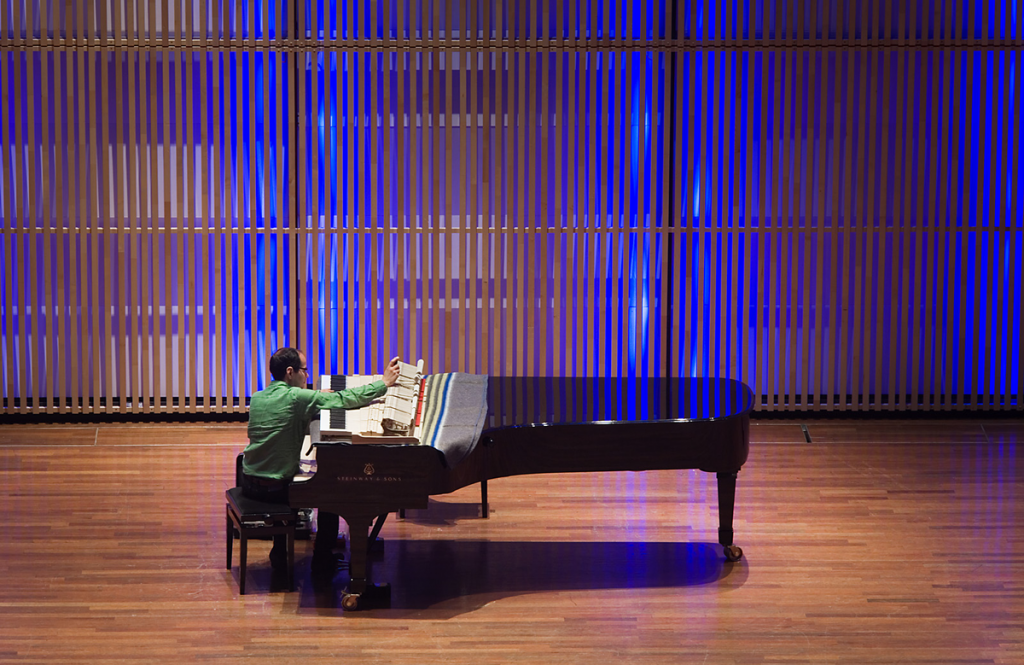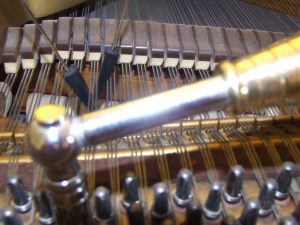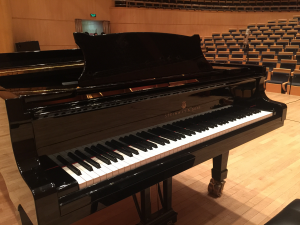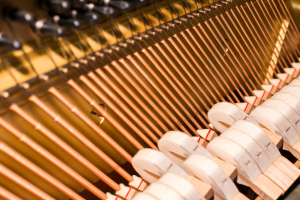Over time, the performance of a piano action tends to decline, due to the compression of felt, warping of wood, and other types of wear. A skilled technician can restore it to optimal precision, in a process called regulation, which involves adjustments ranging from turning a small screw to sanding down a wood surface. Many new pianos are not perfectly regulated when released from the factory, or quickly lose their regulation when moved to their new home, and benefit from regulation in the store or in the home.
The goal of regulation is to make the piano's touch and sound consistent across all notes, allow it to comfortably achieve the widest possible range of dynamics, and make the keys responsive to even the most rapid or most subtle motions of the player.

© Jorge Royan / http://www.royan.com.ar / CC BY-SA 3.0
There are many dozens of types of regulation a piano may require. The most important include adjustment of:
- Let-off, the point when the hammer disengages from the jack and flies freely. If the let-off is too large, it can be very difficult to achieve a pianissimo, to execute rapid trills, and to play powerful fortes; if too small, notes can acquire a "pinched" sound, or even block.
- Drop, how far the hammers fall back after let-off. This affects the responsiveness of the action.
- Repetition springs in a grand piano, which allow a hammer to repeatedly strike with minimal lifting of a key. If a spring is too springy, it can cause double-strikes; if not springy enough, it becomes difficult to repeat a note.
- Key weights (and, in some actions, weight-regulating springs) control the inertia of the keys. A technician can add, remove, or change lead weights in the keys to change how light or heavy the keys feel to the player.
Credit: Piano maintenance





